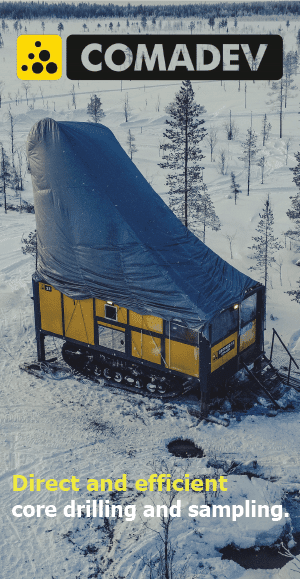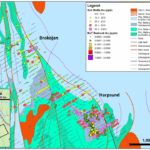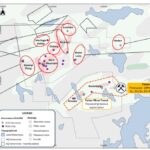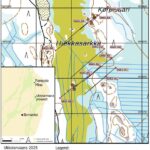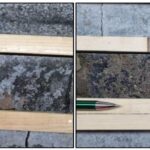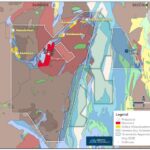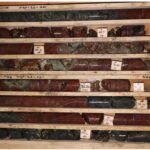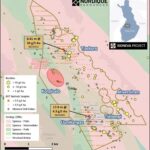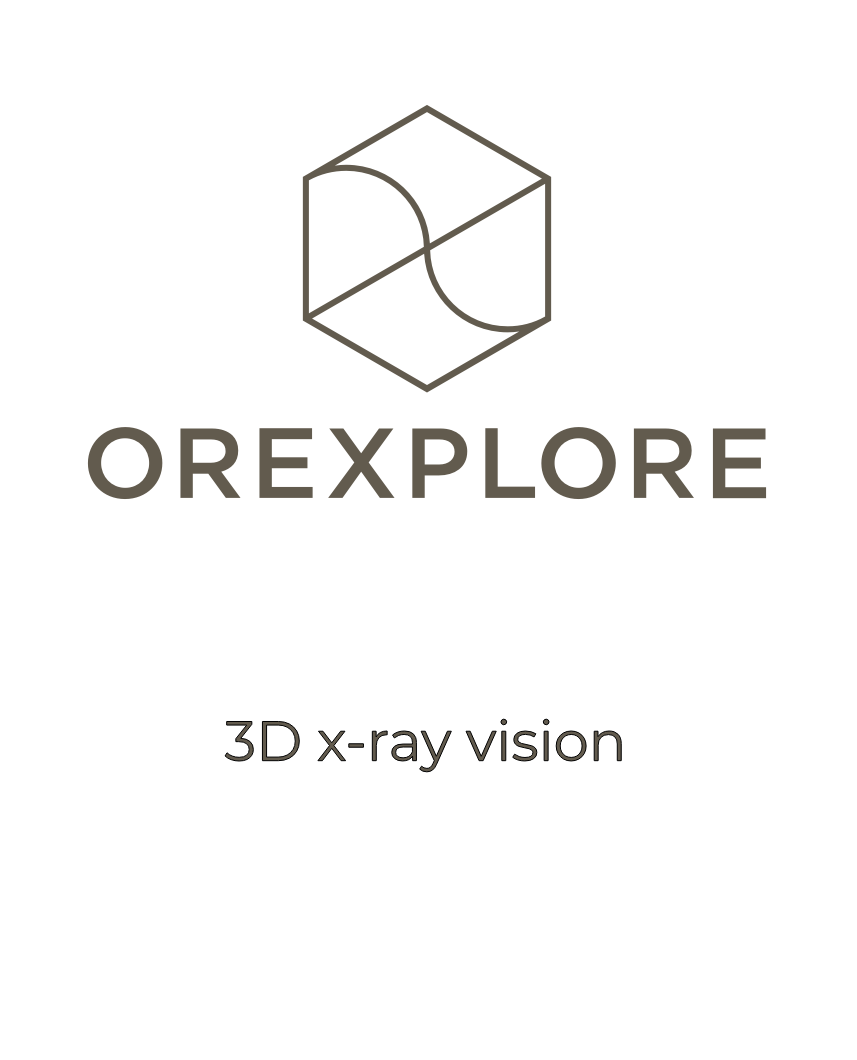Join me on a tour through European Green Transitions’ flagship REE project
Following its recent listing on the Alternative Investment Market in London (April 8th), European Green Transition (AIM:EGT) offered an opportunity to visit its flagship Olserum REE project in south-central Sweden. Situated about thirty minutes north of Västervik at the end of a well-maintained logging road, the project boasts a historic indicated + inferred resource of 7.8 Mt @ 0.61% TREO (at a 0.4% TREO Cut-Off). During the site visit, the company presented its newly developed geological model, results from recently conducted exploration work and outlined its plans for the near future.

Backed by successful Irish investors and the late David Hall’s geological team, EGT acquired Olserum in the summer of 2023 from two private Swedish companies that held identical rights over the deposit as they submitted their exploration permit application on the same day. While this unique situation initially slowed down the projects progress, it ultimately proved beneficial for EGT, as the company has been able to incorporate knowledge and personnel from both companies into its now publicly traded entity.
We kicked off the site visit with a brief introduction to the company’s new geological model before looking at the outcropping mineralization in the field. While the deposit was previously believed to be related to contact metamorphism of intruding granites into the Västervik sediments, initial work conducted by EGT suggests a different origin. Following extensive fieldwork and a core re-logging campaign in Malå, EGT geologists identified clear zones of biotite-magnetite alteration that appear to increase in frequency and intensity closer to the core of the deposit. Based on foliation and REE mineralization proportionally increasing with this alteration, the company interpreted these zones to represent metasomatically overprinted, anastomosing shear zones cutting through the granites and not, as previously thought, altered meta-sedimentary rocks.
The transition from unaltered and only weakly deformed granites to mineralized mylonites is observable in the field by traversing a profile over the known deposit (I tried to highlight this in the graphic below).

REE mineralization at Olserum is primarily hosted within monazite (mostly LREE), xenotime (mostly HREE) and to a lesser extent, apatite, with the historic resource estimate indicating approximately one-third heavy rare earth elements. Historic and ongoing metallurgical test work further indicate that standard processing techniques can achieve a phosphate concentrate, with recoveries ranging between 80-90% to date.
The deposit was initially discovered during uranium exploration in the region with its REE potential not realized until 1991. In 2005, the deposit was drill tested with 31 drill holes by IGE Nordic AB. After acquisition in 2011, Tasman Metals drilled an additional 5 holes, bringing the total to 36 drill holes for approximately 6200m.
After examining the heavily mineralized outcrops of the deposit itself, we continued our tour a few hundred meters along strike to the west, where the company recently discovered more mineralization of similar style, albeit now in association with coarse-grained garnets. The newly discovered mineralized outcrops were subsequently tested with three channel samples, with the best cut returning 14m @ 0.496% TREO, including 4m @ 0.78% TREO and 1m @ 1.88% TREO.

Following the visit of the historic resource area and its western extension, we returned to the cars and drove to the Djupedal prospect, located some 2km northwest of Olserum. Historically mined for iron, the occurrence also hosts coarse-grained REE minerals with one sample recently taken by EGT returning 20.45% TREO (the picture below shows some of the coarse-grained REE minerals that can be found at Djupedal). The showing is located along strike of the inferred shear zone hosting the Olserum deposit and shows an identical mineral assemblage.
Initial drill testing of the mineralization at Djupedal in the early 2000s failed to intercept the high-grade mineralization seen at surface. Based on detailed mapping around the area and the new geological model, the EGT team now interprets the historic drilling to have been oriented parallel to the dip of the mineralized structure, thereby missing the main target. Tracing the inferred strike of the mineralized structures, EGT geologists subsequently discovered multiple REE occurrences of similar style and grades up to 4% TREO, with outcropping mineralization now traced over almost 800m. These discoveries have been followed up by a groundmag survey which correlates the mineralized trend with a magnetic high and further indicates that the strongest anomaly is buried and yet to be discovered. Assays of a follow-up channel sampling program over the mineralized trend at Djupedal are currently pending.
Building on this initial success and understanding that historic exploration failed to intersect the main mineralized structure, the company has permitted six drill pads to test the mineralization at Djupedal as part of its maiden drilling program, scheduled to commence towards the end of summer 2024. As part of the campaign, the company further aims to test the newly discovered mineralization at Olserum West and has permitted enough drill pads to upgrade the existing resource.

Before desperately trying to find a pub in Västervik that doesn’t close at 22:00 (easier to make a discovery than that..), I attended a community meeting organized by the company to update local stakeholders on the latest developments and outline its near-future plans. I was pleasantly surprised to see an overall very positive attitude towards a project that has given the nature of its commodities, its status of national interest and its generally hidden yet well-connected location, good chances of being developed if the resource can be grown and feasibility of the project proven.
It will be interesting to see how the project evolves going forward and whether the company’s new geological model will continue to yield new discoveries, potentially defining a new REE district.

